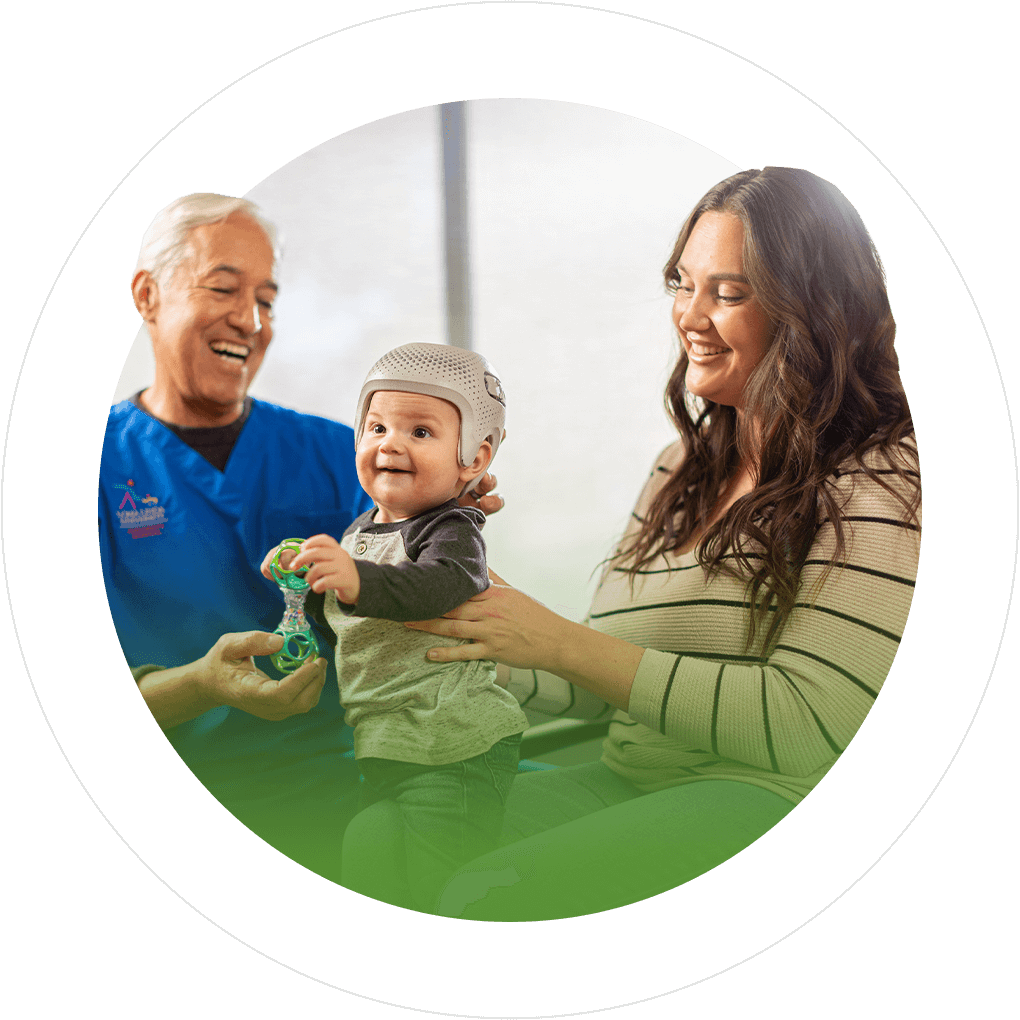The retina is a light-sensitive layer of tissue in the back of the eye. The front of the eye focuses images onto the retina, which then sends these images to the brain through the optic nerve. Vision can become impaired when the retina is damaged. However, repairing the retina is possible.
The following is some information on surgeries performed by the retina service at the Loma Linda University Eye Institute. For more information on retina surgeries as well as retinal diseases, please visit the American Society of Retina Specialists website.
Our Procedures
Retinal Detachment Surgery
Description
A detached retina means the retina has separated from the back of the eye. When the retina is separated from the back of the eye, it is not able to function normally. Retinal detachments are often caused by a single hole or multiple holes in the retina.
A detached retina can be an urgent issue. If left untreated, a retinal detachment can get larger and lead to permanent vision loss.
Treatment
The goal of treatment is to either prevent the retina detachment from getting larger or to reattach the retina to the back of the eye. Depending on the type of retinal detachment, there are several treatment options your retina doctor may offer you:
- Laser or freezing treatment
- Injection of a gas bubble along with laser or freezing treatment (pneumatic retinopexy)
- Vitrectomy
- Scleral buckle
The first two options are usually performed in the office, while the last two options are usually performed in the operating room.
If the retinal detachment is limited, your doctor may offer you laser or freezing treatment around the retinal detachment. The purpose of laser or freezing is to “weld” the retina to the back of the eye to prevent enlargening of the retinal detachment.
In other cases, your doctor may recommend injecting a gas bubble inside the eye in the office, along with either laser or freezing treatment. This is called a pneumatic retinopexy. With a gas bubble in the eye, you will have to position in a certain way per your doctor.
A vitrectomy is performed in the operating room. With a vitrectomy, a retina doctor uses small instruments inside the eye to remove the clear vitreous jelly inside the eye. Any holes in the retina are then lasered, and the eye is filled with a large gas or oil bubble to keep the retina in place while the laser treatment heals.
With a scleral buckle, a permanent piece of silicone is placed around the external surface of the eye. This scleral buckle causes a permanent indentation in the eye, which helps the retina reattach to the back of the eye. The scleral buckle is covered by the “skin” of the eye, and after time, the scleral buckle usually is not noticeable to other people. The scleral buckle stays in place permanently, unless it needs to be removed.
Your physician may choose to perform combinations of the above treatments, for example both a vitrectomy and a scleral buckle.
Outlook (Prognosis)
The vast majority of retinas can be reattached, although this may require more than one procedure or surgery. There is a small (~10%) chance that the retina does not reattach after surgery, or that the retina redetaches after surgery. If this happens, you will need further retina surgery.
The final vision is usually better than the vision before surgery, but the final vision may not be back to normal if the retinal detachment caused permanent damage to the retina.
Diabetic Retinopathy Surgery
Description
Patients with either Type 1 or Type 2 diabetes can develop abnormal blood vessels on the surface of the retina, also known as proliferative diabetic retinopathy. If caught early, these abnormal blood vessels can be treated with injections in the eye as well as laser. However, if not caught early and not treated, these abnormal blood vessels can cause bleeding inside the eye as well as retinal detachments. A retinal detachment means that the retina has come off of the back of the eye. If left untreated, proliferative diabetic retinopathy and retinal detachments can lead to permanent vision loss.
Treatment
If you have problems with your retina due to diabetes, the most important thing you can do for your eyes as well as your body is to work with your primary care doctor or diabetes doctor to make sure your diabetes is under good control. It is also important to make sure your blood pressure and blood cholesterol are as normal as possible.
Bleeding in the eye due to diabetes can sometimes be treated in the office with injections in the eye and laser. However, if there is no improvement in the bleeding, or if the proliferative diabetic retinopathy causes a severe retinal detachment, your doctor may offer you vitrectomy surgery. With vitrectomy surgery, your doctor uses small instruments to remove the vitreous jelly inside the eye. If there is a retinal detachment, this is fixed at the time of surgery. Laser is usually added, and the eye is filled with saline fluid, a gas bubble, or an oil bubble.
Outlook (Prognosis)
Problems in the retina due to diabetes can be very complicated and difficult to treat. The final vision can be difficult to predict, but it is very important to follow you doctor’s instructions and go to all of your appointments after surgery to try to improve your final vision.
Laser Floater Therapy (LFT)
Laser Floater Therapy (LFT) can help treat eye floaters, which are bits of debris that float in the eye’s vitreous humor and can lead you to see shadows “floating” in your vision.
LFT is a non-invasive, outpatient procedure using laser light and aims to help you return to normal activity by removing or reducing the floaters. Treatment sessions typically take 20-60 minutes, and most patients will need two to three sessions for effective results. While side effects are rare, patients may experience cataract and intraocular pressure (IOP) spike.
Our providers are experienced in using LFT to effectively treat eye floaters and can evaluate whether the treatment may benefit you. They can also provide more details about the procedure, including how it works, what to expect, and other treatment options.
Patient Resources
Macular Hole Surgery
Description
The macula is the center part of your retina that is responsible for your sharp, center vision. Sometimes, a hole can develop in the macula, which is known as a macular hole. Macular holes usually develop for unknown reasons, but can sometimes be due to a past eye injury.
Patients with macular holes usually notice blurred central vision, or a missing spot in their central vision.
Treatment
Macular holes can be treated with vitrectomy surgery, in which a doctor uses small instruments to remove the clear vitreous jelly in the eye, and replaces the jelly with a large gas bubble.
After vitrectomy surgery, most surgeons will want you to do “face-down” positioning, in which you spend a significant amount of time looking down at the floor. The purpose of the positioning is to maximize the chances for improved vision and surgical success. Depending on your doctor, the amount of face-down positioning may range between a few days to 3 weeks. Please let your doctor know about any problems you may have with positioning.
With a gas bubble in the eye, you will not be allowed to lay flat on your back, fly on an airplane, or go up to high altitudes as long as the gas bubble is in the eye. The gas bubble goes away by itself in 1-2 months.
Outlook (Prognosis)
Most macular holes will close with vitrectomy surgery, and the vision usually improves over a several month period after surgery. However, the vision is usually not completely back to normal after surgery.
Epiretinal Membrane / Macular Pucker Surgery
Description
In some patients, a film of scar tissue can form over the central retina. The central retina is called the macula, and it is responsible for your sharp, central vision. The film is called an epiretinal membrane, and it can cause distortion of the macula, or a “macular pucker.”
It is unknown why epiretinal membranes form, but they can be related to changes in the vitreous jelly as well as inflammation in the eye.
Epiretinal membranes can have no symptoms, in which case they are watched. However, over time, some patients with epiretinal membranes can develop vision problems. These vision problems include distortion of vision (straight lines look wavy or curved), double vision, and changes in the size of objects between the two eyes. If these symptoms are bothersome, patients can consider surgery.
Treatment
Epiretinal membranes/macular pucker can be treated with vitrectomy surgery, in which a doctor uses small instruments to remove the clear vitreous jelly in the eye. The doctor then uses instruments to peel the epiretinal membrane off of the surface of the retina.
Outlook (Prognosis)
Most patients will notice some improvement in their vision after surgery, but it is difficult to say exactly how much improvement there will be. Rarely, some patients may notice double vision after surgery. This can be treated with glasses or further surgery.
Risk of Surgery
Risks for retinal surgery include:
- Development of a retinal tear or detachment during surgery or afterwards
- For retinal detachment surgery, the retina does not reattach fully, or redetaches again after surgery
- Need for further retinal surgery or procedures
- Eye redness and discomfort after surgery
- Cataract
- Double vision
- Droopy eyelid
- Change in eyeglass prescription
- Change in the size and shape of the pupil (opening in the front of the eye that allows light to get into the eye)
- Severe infection of the eye (rare)
- Severe bleeding inside the eye (rare)
- Vision loss (rare)
- Loss of the eye (extremely rare)
- Death (extremely rare)
Preoperative Care
Retinal surgeries in the operating room can usually be performed under general or local anesthesia. Local anesthesia usually means a numbing shot around the eye. Please let your doctor know if you are unable to lay still on your back for an hour or so, have severe neck or back pain when laying flat, or have severe claustrophobia or restless legs.
Please let your doctors know if you are taking any blood thinners such as aspirin or Coumadin. Your doctors may want you to stop these prior to retina surgery.
Do not wear any eye makeup or artificial eyelashes on the eye to be operated on for 1 week prior to surgery.
Please let your doctors know if you are taking any medicines for diabetes or high blood pressure (especially angiotensin-converting enzyme inhibitors or angiotensin II receptor blockers). Your doctors may want you to hold these 24 hours before surgery.
Please let your doctors know if you have a pacemaker.
Do not eat or drink anything at least 6 hours before your check-in time for surgery. This means no coffee, milk, or unnecessary water. You can take tiny sips of water with your pills.
Postoperative Care
You will most likely be able to go home or to a hotel after your surgery is done. You will need someone to take you home or to a hotel after your surgery.
In most cases, you will see an eye doctor for postoperative visits one day, one week, and 4-6 weeks after your surgery, depending on your eye doctor. Some eye doctors forgo the one week visit.
You will be need to pick up eye drops after surgery. These will be started the day after surgery.
There will be an eyepatch over the eye after surgery. Please keep it on until the eye care team takes it off the next day.
Some mild eye discomfort is normal the night after surgery, as well as for the first few weeks after surgery. It is ok to take acetaminophen (e.g., Tylenol) for mild pain after surgery. If the pain is severe and not improving with acetaminophen, please call or see your eye doctor.
For 4-7 days after surgery, do not rub the eye that had surgery, avoid heavy lifting or straining, and do not submerge the eye that had surgery underwater (no bathing or swimming).
It is ok to shower after surgery, but avoid getting tap water in the eye that had surgery.
Gas bubble/oil bubble precautions
If the doctor placed a gas or oil bubble in the eye, you cannot sleep or lay flat on your back while the gas or oil bubble is in the eye. Please position per your doctor’s instructions.
If you have a gas bubble in the eye, you cannot fly on an airplane or go up to high altitudes until the gas bubble goes away.
A gas bubble will slowly go away over 1-2 months, while a silicone oil bubble will require another surgery to remove it.
You may notice a line in your vision as the gas bubble goes away. This is normal.
Blood thinners
If you had your blood thinners stopped prior to surgery, please ask your doctors when you can restart them.
You may notice mild floaters, mild flashing lights, or mild bloody discharge from the eye after surgery. This is normal.
If you develop severe eye pain, or severe vision decrease after surgery, please call or see your eye doctor immediately. The phone number for the Loma Linda University Eye Institute is 909-558-EYES or 909-558-4000.







